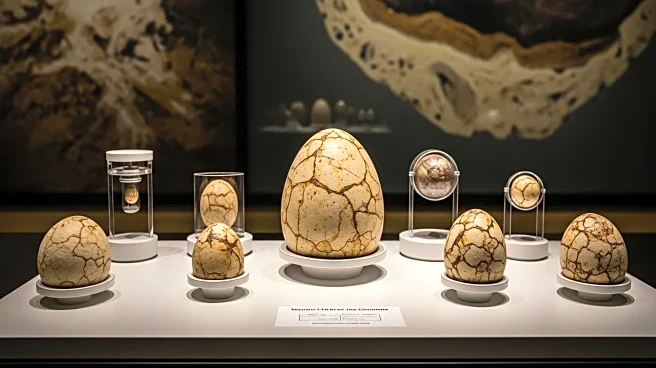What's Happening?
A team of scientists has successfully dated a clutch of 28 dinosaur eggs found in the Qinglongshan fossil reserve in central China to approximately 86 million years ago. This was achieved using a technique known as carbonate uranium-lead (U-Pb) dating, which involves analyzing the decay of uranium to lead in carbonate minerals. The eggs, belonging to the species Placoolithus tumiaolingensis, were found to be well-preserved, allowing for this precise dating. The research, published in the journal Frontiers in Earth Science, marks the first time fossils from this site have been reliably dated. The findings could provide insights into how dinosaurs in the Yunyang Basin adapted to a cooling climate during the Cretaceous period.
Why It's Important?
The successful application of U-Pb dating to these dinosaur eggs represents a significant advancement in paleontology, offering a more precise method for dating fossils. This could enhance our understanding of dinosaur evolution and behavior, particularly in relation to environmental changes. The technique's potential to be applied to other fossils containing primary carbonate minerals could revolutionize the way scientists establish chronological frameworks for ancient ecosystems. This development is crucial for paleontologists seeking to understand the timeline of dinosaur reproduction and adaptation strategies in response to climatic shifts.
What's Next?
Researchers plan to apply the U-Pb dating technique to other Cretaceous sites to further explore the origin and evolution of dinosaur eggs and nesting habits. With over 200 dinosaur egg sites worldwide, this method could become a valuable tool for accurately dating and studying preserved examples of dinosaur reproduction. The continued refinement and application of this technique could lead to a more comprehensive understanding of dinosaur life and the environmental factors that influenced their evolution.











